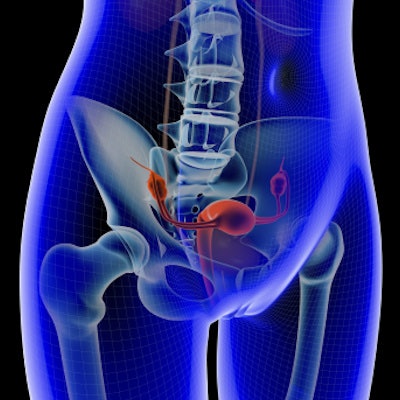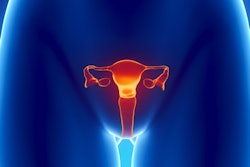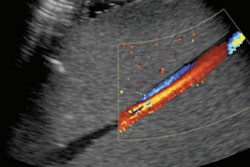
Hysterosalpingography (HSG) with 4D contrast ultrasound offers a less invasive option than laparoscopic chromopertubation for assessing the patency of fallopian tube fimbria, according to a study published in the October issue of the Journal of Ultrasound in Medicine.
Because evaluating whether the fallopian tubes are open is a key part of diagnosing infertility in women, the fact that 4D contrast ultrasound HSG is a viable alternative to a surgical procedure is good news, wrote a team led by Dr. Weiqun Wang from Third Affiliated Hospital of Guangzhou Medical University in China (J Ultrasound Med, October 2017, Vol. 36:10, pp. 2061-2069).
"Our results suggest that [4D contrast ultrasound HSG], a noninvasive, lower-cost modality with high reproducibility, has the potential to serve as an alternative imaging approach over laparoscopic chromopertubation," the authors wrote.
Less invasive
Tubal obstruction and pelvic adhesions account for up to 35% of infertility cases, according to Wang and colleagues. The most commonly used approaches for evaluating whether the fallopian tube is blocked or whether a woman has pelvic adhesions include x-ray hysterosalpingography, 3D contrast HSG (HyCoSy), and laparoscopic chromopertubation, in which a dye is instilled through the fallopian tubes to assess tubal patency.
But there are limitations to these exams: X-ray HSG's diagnostic accuracy is 83%, and it carries concerns about iodine allergy and radiation exposure. HyCoSy is based on just a single volume of data, which makes it impossible to visualize contrast overflow from the fimbriae of the fallopian tubes, making it harder to accurately diagnose fimbria patency. And while laparoscopic chromopertubation is considered the reference standard for evaluating the fallopian tubes, it is invasive and costly and requires hospitalization.
New microbubble ultrasound contrast media for assessing fallopian tube patency and improvements to ultrasound HSG technology make hysterosalpingography with real-time 3D ultrasound (4D) an alternative, however.
"Real-time 3D hysterosalpingo-contrast sonography, or 4-dimensional hysterosalpingo-contrast sonography ... can visualize the contrast medium flow from the uterine cavity to the fallopian tubes and fimbria on the fly," the researchers wrote. "[By] presenting more imaging information in a user-friendly mode, [the dynamic imaging process] is of great help in diagnosis of fimbria patency and surrounding pelvic adhesions."
In their study, Wang and colleagues compared the performance of 4D ultrasound contrast HSG with laparoscopic chromopertubation. They included 77 women with obstruction at the tubal fimbria in one or both fallopian tubes or partial obstructions with pelvic adhesions (mean age, 31). All of the women underwent 4D ultrasound contrast HSG between December 2014 and January 2016; within six months, they also underwent a laparoscopic chromopertubation of the fallopian tubes using methylene blue dye.
| Fallopian tube assessment with 4D ultrasound contrast HSG vs. chromopertubation | ||
| 4D ultrasound contrast HSG | Chromopertubation | |
| No. of fallopian tubes characterized as viable | 90/154 | 87/154 |
| No. of fallopian tubes characterized as obstructed | 64/154 | 67/154 |
| Accordance | 92.9% | 92.9% |
| Sensitivity | 93.8% | 100% |
| Specificity | 92.2% | 100% |
"The excellent consistency and high overall accuracy indicate that [4D contrast HSG] is a promising alternative imaging modality over invasive laparoscopic chromopertubation," the group wrote.
Patient experience
What was the patients' experience of the 4D ultrasound contrast HSG exam? Twenty-three women had no obvious pain, 39 had mild to moderate pain, and 15 had pain that required a hot pack placed on the abdomen for relief. No hospitalization was required for any of the study participants, Wang and colleagues noted.
Obstetricians are already beginning to use 4D contrast HSG more often to screen for infertility. This study demonstrates that the exam can also be used to assess fallopian fimbria obstruction, the group wrote.
"Although invasive laparoscopic chromopertubation is considered the reference standard for [fallopian fimbria obstruction], we have demonstrated that [4D contrast HSG] ... is able to provide an accurate diagnosis with high sensitivity and specificity of greater than 90%," the researchers concluded.




















